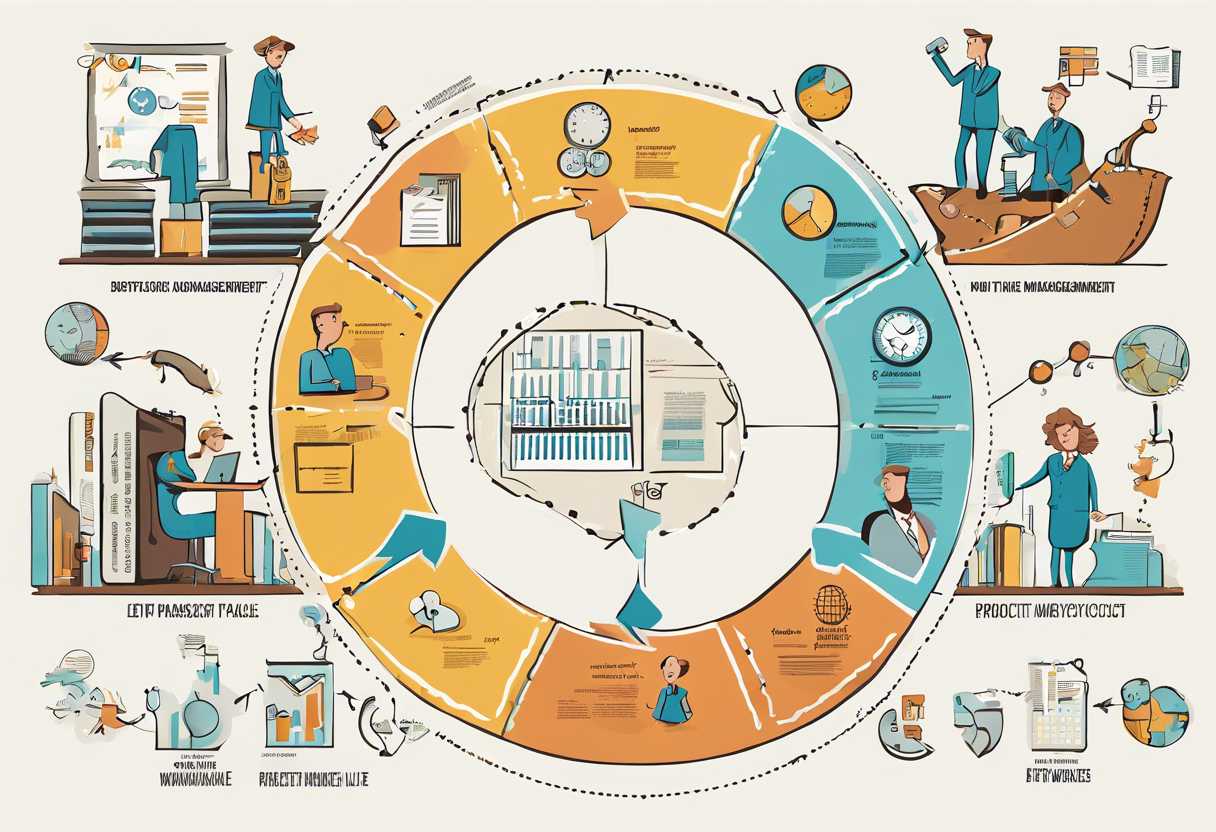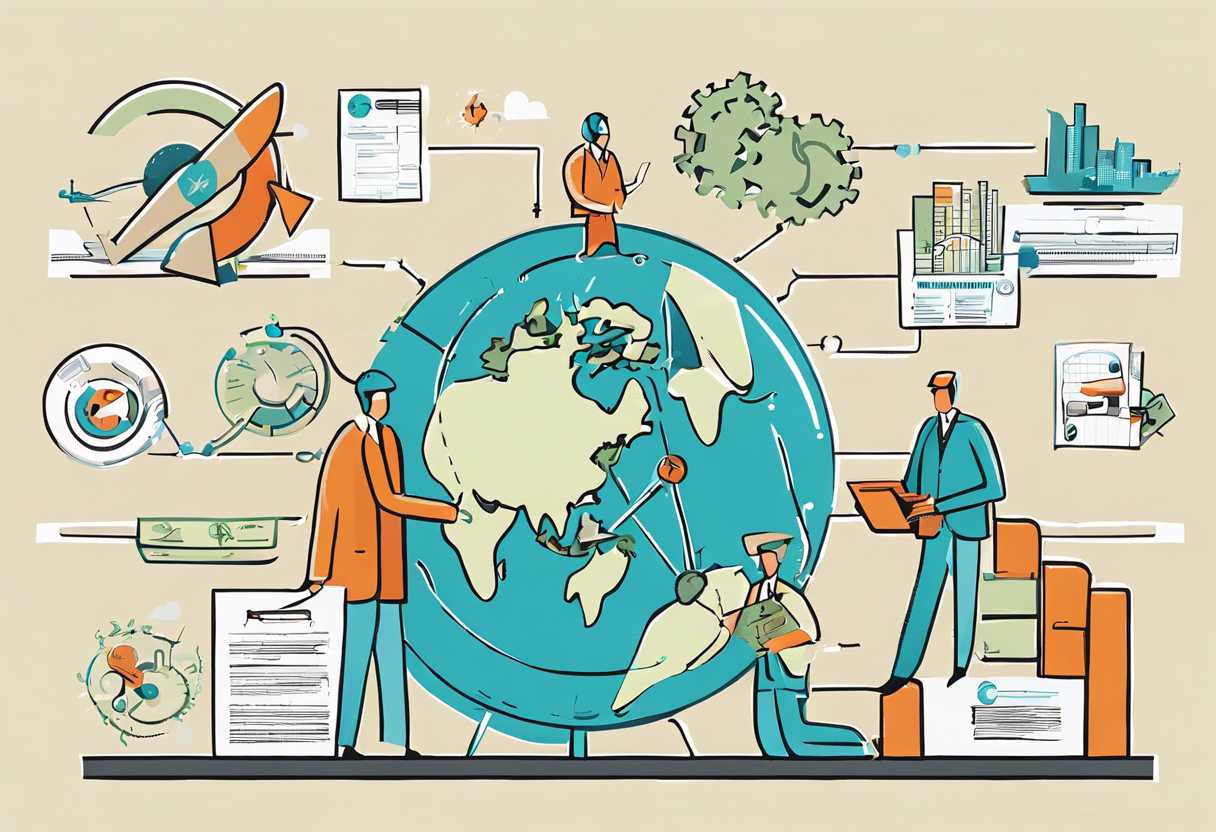Project Management Life Cycle Phases play a crucial role in the successful execution of any project. Understanding and effectively navigating through these phases is essential for project managers and teams to achieve their goals and deliverables. In this blog post, we will delve into the significance of Project Management Life Cycle Phases and explore the five key phases involved. We will also discuss best practices for the successful execution of these phases, common challenges faced, and how technology can be leveraged to streamline the entire process. By the end of this post, you will have a comprehensive understanding of the Project Management Life Cycle Phases and how to navigate through them with ease and efficiency.
Understanding the Importance of Project Management Life Cycle Phases
The Concept of Project Management Life Cycle
Project management life cycle refers to the series of phases that a project goes through from initiation to completion. These phases include initiation, planning, execution, monitoring and controlling, and closing. Each phase has its own set of activities, deliverables, and outcomes, and they are crucial for the successful completion of a project.
Importance of Project Management Life Cycle Phases
Understanding the importance of project management life cycle phases is essential for ensuring the success of any project. Each phase plays a critical role in the overall project management process, and they help in ensuring that the project is completed on time, within budget, and with the expected quality.
Initiation Phase: This phase sets the foundation for the project and involves defining the project scope, objectives, and stakeholders. It is important as it helps in identifying the purpose and feasibility of the project.
Planning Phase: This phase involves creating a detailed project plan, including defining the project scope, creating a work breakdown structure, and developing a schedule and budget. It is crucial as it helps in setting clear expectations and guidelines for the project.
Execution Phase: This phase involves the actual implementation of the project plan. It is important as it ensures that the project activities are carried out as per the plan and that the project team is working towards achieving the project objectives.
Monitoring and Controlling Phase: This phase involves tracking, reviewing, and regulating the progress and performance of the project. It is important as it helps in identifying any deviations from the plan and taking corrective actions to keep the project on track.
Closing Phase: This phase involves formally closing the project and ensuring that all the project deliverables have been met. It is important as it helps in evaluating the project’s success and capturing any lessons learned for future projects.
Conclusion
Understanding the importance of project management life cycle phases is crucial for project managers and team members. By recognizing the significance of each phase and its role in the overall project management process, organizations can ensure the successful completion of their projects.

Exploring the Five Key Phases of Project Management Life Cycle
The Initiation Phase
In the initiation phase of the project management life cycle, the project is defined at a broad level. This is where the project’s value and feasibility are determined. It involves identifying the project’s purpose, scope, and objectives. *Stakeholder analysis* is also conducted during this phase to identify the individuals or groups that will be affected by the project and to understand their needs and expectations.
The Planning Phase
During the planning phase, the project scope is defined, the project plan is developed, and the project team is assembled. This phase involves creating a detailed project plan that outlines the tasks, resources, timeline, and budget required to complete the project. *Risk management* is also a key component of the planning phase, as potential risks are identified and strategies are developed to mitigate them.
The Execution Phase
The execution phase is where the project plan is put into action. This involves coordinating people and resources, as well as integrating and performing the activities of the project in accordance with the project management plan. *Communication* is crucial during this phase to ensure that all stakeholders are informed of the project’s progress and any changes that may occur.
Best Practices for Successful Execution of Project Management Life Cycle Phases
Initiation Phase
During the initiation phase of a project management life cycle, it is crucial to clearly define the project’s objectives, scope, and stakeholders. *Effective communication* with all stakeholders is essential to ensure that everyone is aligned on the project’s goals and expectations. Additionally, conducting a thorough feasibility study and risk assessment will help in identifying potential challenges and developing a realistic project plan.
Planning Phase
The planning phase is where the project roadmap is created, detailing the tasks, timelines, resources, and budget required for successful project completion. *Collaboration* among the project team members is key during this phase to ensure that all aspects of the project are considered and accounted for. Utilizing project management tools and software can help in creating detailed project plans, Gantt charts, and resource allocation schedules.
- Utilize project management software for creating detailed project plans
- Collaborate with team members to gather input and insights
- Create a comprehensive project roadmap with clear milestones and deliverables
Execution Phase
Once the project plan is in place, the execution phase involves putting the plan into action. *Effective leadership* and communication are crucial during this phase to ensure that the project team stays on track and that any issues or roadblocks are addressed promptly. Regular status meetings and progress reports can help in keeping everyone informed and aligned with the project’s goals.
- Assign tasks and responsibilities to team members
- Monitor progress and address any issues promptly
- Regularly communicate updates and milestones to stakeholders
| Phase | Key Activities |
| Initiation | Define project objectives, scope, and stakeholders |
| Planning | Create project roadmap, resource allocation, and budget |
| Execution | Assign tasks, monitor progress, and communicate updates |
Common Challenges Faced During Project Management Life Cycle Phases
Initiation Phase
During the initiation phase of a project, one of the most common challenges is unclear project objectives. This can lead to confusion among team members and stakeholders, resulting in a lack of direction and focus. Additionally, poorly defined project scope can also be a challenge, as it may lead to scope creep and project delays. It is crucial for project managers to clearly define project objectives and scope during this phase to avoid these challenges.
Planning Phase
In the planning phase, inadequate resource allocation is a common challenge that project managers face. This can lead to overburdened team members, missed deadlines, and budget overruns. Another challenge is ineffective communication among team members and stakeholders, which can result in misunderstandings and conflicts. Project managers must carefully allocate resources and establish clear communication channels to overcome these challenges during the planning phase.
Execution Phase
During the execution phase, poor risk management is a common challenge that project managers encounter. Failure to identify and mitigate risks can lead to project failures and cost overruns. Additionally, scope changes can also be a challenge, as they may disrupt the project timeline and budget. Project managers must prioritize risk management and establish a change control process to address these challenges during the execution phase.
Leveraging Technology to Streamline Project Management Life Cycle Phases
Utilizing Project Management Software
Project management software has revolutionized the way project managers handle the various phases of a project life cycle. With features such as task management, resource allocation, and real-time collaboration, project management software allows for seamless coordination and communication among team members. *This technology enables project managers to efficiently plan, execute, and monitor projects, ultimately streamlining the project management life cycle.*
Automation of Routine Tasks
Automation tools can significantly streamline project management life cycle phases by reducing the time and effort required for routine tasks. By automating processes such as scheduling, reporting, and data entry, project managers can focus on more strategic aspects of project management. *This not only increases efficiency but also minimizes the risk of human error, leading to better project outcomes.*
Integration of Data Analytics
Integrating data analytics into project management processes can provide valuable insights that help in making informed decisions throughout the project life cycle. By leveraging data analytics tools, project managers can identify trends, forecast potential risks, and optimize resource allocation. *This technology empowers project managers to proactively address challenges and make data-driven decisions, ultimately improving project outcomes.*
Conclusion
Understanding the importance of project management life cycle phases is crucial for the successful execution of any project. By exploring the five key phases of project management life cycle, including initiation, planning, execution, monitoring and controlling, and closing, project managers can ensure a structured approach to project delivery.
Implementing best practices for successful execution of project management life cycle phases, such as clear communication, stakeholder engagement, and risk management, can significantly contribute to project success. However, it’s important to acknowledge the common challenges faced during project management life cycle phases, such as scope creep, resource constraints, and changing requirements.
Leveraging technology to streamline project management life cycle phases can help overcome these challenges and improve overall project efficiency. By utilizing project management software, collaboration tools, and automation, project managers can enhance productivity and decision-making throughout the project life cycle.
As project management continues to evolve, it’s essential for professionals to stay updated with the latest trends and advancements in the industry. Embracing agile methodologies, incorporating data-driven insights, and fostering a culture of continuous improvement can further optimize project management life cycle phases.
Ultimately, mastering project management life cycle phases is a continuous journey that requires dedication, adaptability, and a commitment to delivering value to stakeholders. By applying the principles and strategies discussed in this blog, project managers can navigate through the complexities of project management with confidence and achieve successful project outcomes.
Are you ready to elevate your project management skills and drive project success? Stay informed, stay proactive, and embrace the opportunities that project management life cycle phases present. Let’s embark on this journey together and make every project a triumph!

